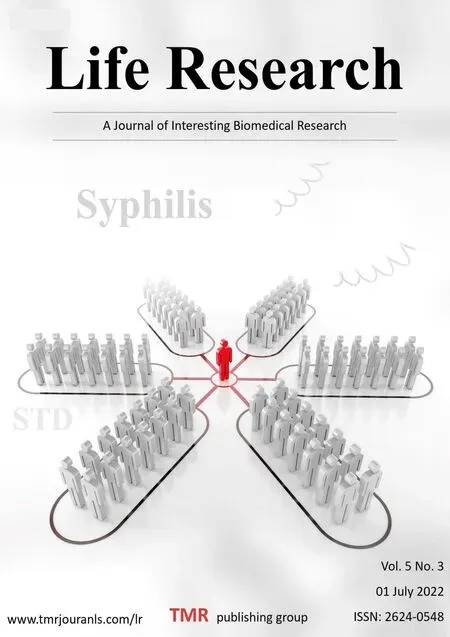Research status of persistent vegetative state in recent 20 years: A bibliometric analysis
Lei Yang, Xiao Chen, Kai-YueWang, Zhuang Liang, Li-Yun He *
Abstract We searched PVS-related literature in the Web of Science Core Collection database, extracted and analyzed the data using the Science Citation Index Extended Edition, and included two types of literature: review and monograph.The search terms were subject= persistent vegetative state and publication year (2001-2021) and language = English.Statistical analysis of literature overview,countries and regions, institutions, authors, literature source publications, literature research direction, citation frequency, impact factor, H-index and keywords, etc.are carried out.Use VOS viewer 1.6.17 software to visually cluster the keywords in the titles and abstracts of the included literature and analyze the research direction and development trend.A total of 772 PVS-related documents published in the core collection database of Web of Science from 2001 to 2021 were included.The country with the largest number of publications was the United States (261 papers, 33.80%), and the institution with the largest number of publications was the University of Liège, Belgium (40 papers, 5.18%).The author with the largest number of published papers is Laureys S of the University of Liège,Belgium (39 papers, 5.05%).The research directions of PVS are mainly neuroscience (350 articles, 45.33%), rehabilitation (98 articles,12.69%), and internal medicine (9 articles, 11.79%).The literature is mainly from Brain Injury.The annual average impact factor of the top 10 journals in 2020 was 4.55, and their publication volume accounted for 17.35% (134/772) of the total literature.The 772 articles were cited 23,503 times (21,400 self-citations were excluded), with an average of 30.44 citations per article.The H-index of the United States, the United Kingdom and Belgium are 48, 27 and 27, which are significantly higher than other countries, and the citation frequencies are 8609, 3451 and 3270, accounting for 36.60%, 14.68% and 13.90% of the total citations, respectively.China's publication volume is in the middle, but only 8th in citation frequency and H-index (818 citations, H-index 16).We used the VOS viewer software to analyze and found that the keywords were mainly concentrated in four groups: "diagnosis-related","treatmentrelated","prognosis-related"and"disease-related".From 2001 to 2021, the United States, Italy and the United Kingdom have the largest number of PVS related literature publications.There is still a certain gap between China and western countries in terms of the number and quality of literature publications.
Key words: Persistent plant state; bibliometrics; H index; VOS viewer software
Introduction
Persistent vegetative state (PVS) is a specific disorder of consciousness first described by Jennet and Plum in 1972, which describe as a state in which the patient is "awake but unresponsive"to the surrounding environment [1-2].In recent studies, PVS have been called "unresponsive arousal syndrome" [3].The most common causes of PVS are brain injury, cerebrovascular disease and hypoxic ischemic encephalopathy [4].With the continuous improvement of modern medical technology.The mortality rate of patients with acute brain injury is decreasing year by year, but the recovery of brain function is not improved due to the progress of treatment methods.The patients with "vegetative state" are increasing year by year,which is one of the most common causes of death and disability among young and middle-aged people [5] .In craniocerebral injury,7~15% patients were in vegetative state for a long time due to severe injury, and coma time was positively correlated with mortality [6-7].This is associated with a variety of complications [8].Recent studies have found that the pathogenesis of PVS is extensive neuronal degeneration of cerebral cortex and white matter, necrosis of thalamus and blocking of reticular ascending activating system[9].At present, the treatment of PVS mainly includes neurotrophic therapy, drug therapy, hyperbaric oxygen therapy, stem cell transplantation, nerve electrical stimulation, etc.PVS has a high rate of disability and mortality, which has brought a serious burden to the family and society and has become a focus of the medical community and even the community at home and abroad [10].Most of the current studies have only conducted in-depth studies on the pathogenesis and treatment of PVS, but there are few studies on the occurrence characteristics and development trend of PVS in the long term.This study aims to have a more comprehensive understanding of the occurrence, development rules and characteristics of PVS.Bibliometrics is an important tool in scientific research [11],it occupies an important position in scientific research [12].Bibliometrics can directly show the scientific output of individuals,institutions or countries by analyzing the parameters of literature quantity, influencing factors and publication time [13].This paper uses bibliometrics and VOS Viewer software to conduct qualitative and quantitative evaluation of PVS related literature in the Core collection database of Web of Science, so as to review the current mainstream research on PVS in the world.
Materials and methods
Literature Inclusion
Publicly published in the core collection of the "Web of Science"database, the publication time is from 2001 to 2021, and it includes two types of literature: monographs and reviews, and the language is limited to English.
Literature search
(1) Enter keywords: use "persistent vegetative state" to search the core collection database of "Web of Science".(2) The first and second authors of this paper input and collect data and verify the data.Download the txt data from the core collection database of"Web of Science" and import it into the VOS viewer software for data analysis.
Statistical items
Through the "Web of Science" core collection database to analyze the characteristics of documents, including countries and regions,publishing institutions, authors, source journals, publication time,impact factor, H-index, citation frequency and keywords.The H-index means that the papers published by the author within a certain period of time have at least H citations not less than H times[14].We draw histograms using Microsoft Excel software.Construct and visualize co-occurrence networks with VOS viewer software.Pearson correlation analysis was used to study the relationship between the H-index and the number of citations.
Results
Literature overview a total of 1012 PVS-related literatures were retrieved from the core collection database of "Web of Science",excluding conference abstracts, conference proceedings papers,editorial materials, letters, book chapters, news, etc.Finally 772 papers and reviews were included.These 772 documents were provided by 58 countries and regions.In Figure 1, 772 papers were published in the United States ranked first (261, 33.80%), followed by Italy (95, 12.30%) and the United Kingdom (73, 9.45%).The top five institutions with the largest number of publications are Liege University, Cornell University, Harvard University, University of California, and University of Western Ontario (Table 1).
Distribution of authors of the literature the top 10 authors of PVSrelated literature published a total of 163 papers, accounting for 22.11% of the total PVS-related literature.Among them, Laureys S from the University of Liege in Belgium published the most papers(39), followed by the United Kingdom Owen AM, University of Cambridge (25 papers) and Schiff ND, Cornell University, USA (15 papers).Of the 10 authors, 7 are from universities and 2 are from the Institute of Neurology (Table 2).
The distribution of literature subjects and journals the 772 literatures mainly cover the disciplines of neuroscience (350 articles,45.33%), rehabilitation (98 articles, 12.69%), general internal medicine (9 articles, 11.79%), and surgery (65 articles), 8.42%),social sciences (51 articles, 6.61%), and also involving biomedical social sciences, psychology, ethics and other disciplines.The top 5 journals with published papers are Brain Injury, Archives of Physical Medicine and Rehabilitation, Neurology, Neuroethics, and Clinical Neurophysiology.The average impact factor of the top 10 journals with the most publications in 2020 was 4.55, and their publications accounted for 17.35% (134/772) of the total publications.Among them, the Impact Factor of Neurology in 2020 is 9.91 (Table 3).

Figure 1.Top 10 countries with publications on persistent plant status from 2001 to 2021.
Literature citation and H-index analysis According to the analysis of the "Web of Science" collection database, 772 papers have been cited 23,503 times (21,400 self-citations have been excluded),with an average of 30.44 citations per paper.Data from the 10 countries with the most publications were selected for research.The pearson correlation analysis showed that the H index was positively correlated with the citation frequency (r = 0.992, P <0.01).The H-index and citation frequency of the United States, the United Kingdom and Belgium are higher than those of the other 7 countries.The H-index of the United States is 48, and the H-index of the United Kingdom and Belgium is 27.The United States is cited 8609 times, accounting for 36.60% of the total citation frequency, followed by it is the United Kingdom (cited 3451 times,accounting for 14.68% of the total citation frequency) and Belgium(cited frequency 3270, accounting for 13.9% of the total citation frequency).China's publication volume is in the middle, but its H-index and citation frequency are low (818 citations, H-index 16)(Figure 2).

Figure 2.H index and citation frequency of the top 10 countries in terms of publications related to persistent plant state from 2001 to 2021
The 10 most frequently cited papers are all cited more than 200 times, and the 3 most cited papers are towards a cognitive neuroscience of consciousness: basic evidence and a workspace framework, the JFK Coma Recovery Scale -Revised: measurement characteristics and diagnostic utility and Willful Modulation of Brain Activity in Disorders of Consciousness.The average impact factor of these 10 literature source journals in 2020 is 24.349, of which 2 are from "New England Journal of Medicine", and its 2020 impact factor is 91.253 (Table 4).
Hots pots of PVS research using VOS viewer software to analyze the keywords of 772 literatures, a total of 455 keywords appear more than 10 times in the title and abstract, and there are 17142 links.These keywords were divided into 4 groups: "diagnosis-related","treatment-related", "prognostic-related" and "disease-related".In the "diagnosis-related" group, the main keywords were minimally conscious state (154 episodes), disorders of consciousness (94 episodes), and unresponsive wakefulness syndrome (58 episodes).In the 'treatment-related' group, the main keywords were EEG (68 sessions), coma recovery scale revised (58 sessions), and resting state fMRI (52 sessions).In the "prognosis-related" group, the main keywords were recovery (rehabilitation, 152 times), disorders(disorders, 83 times), and severe brain-injury (traumatic brain-injury,61 times).In the "disease-related" group, the main keywords were PVS (362 times), ethics (ethics, 31 times) and nursing (care, 28 times) (Figure 3).
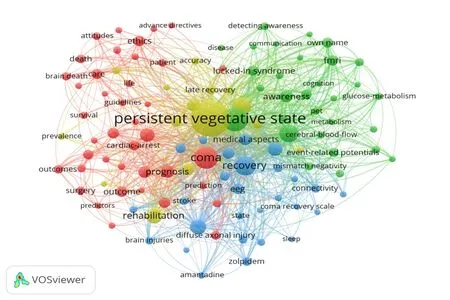
Figure 3.Research direction distribution map determined by Vosviewer1.6.17 based on cluster analysis of key words in Chinese titles and abstracts of 772 PVS-related articles in the core collection of Web of Science database from 2001 to 2021.
We used the VOS viewer software to perform statistical analysis on the keywords published in the literature from 2012 to 2017, and found that the keywords in the early stage of PVS research wereminimally conscious state (MCS; the average publication year was 2012.01), coma (coma, the average publication year is 2012.54),disorders of conscious (disorders of conscious, the average publication year is 2015.46), etc.The key words of later studies were gradually changed to long-term outcome (long-term outcome,average publication year: 2016.20), default mode network (average publication year: 2016.78), and unresponsive wakefulness syndrome(average publication year: 2016.78) The publication year is 2017.03).It shows that the research direction of persistent vegetative state has changed to diagnosis-related and rehabilitation-related in recent years.
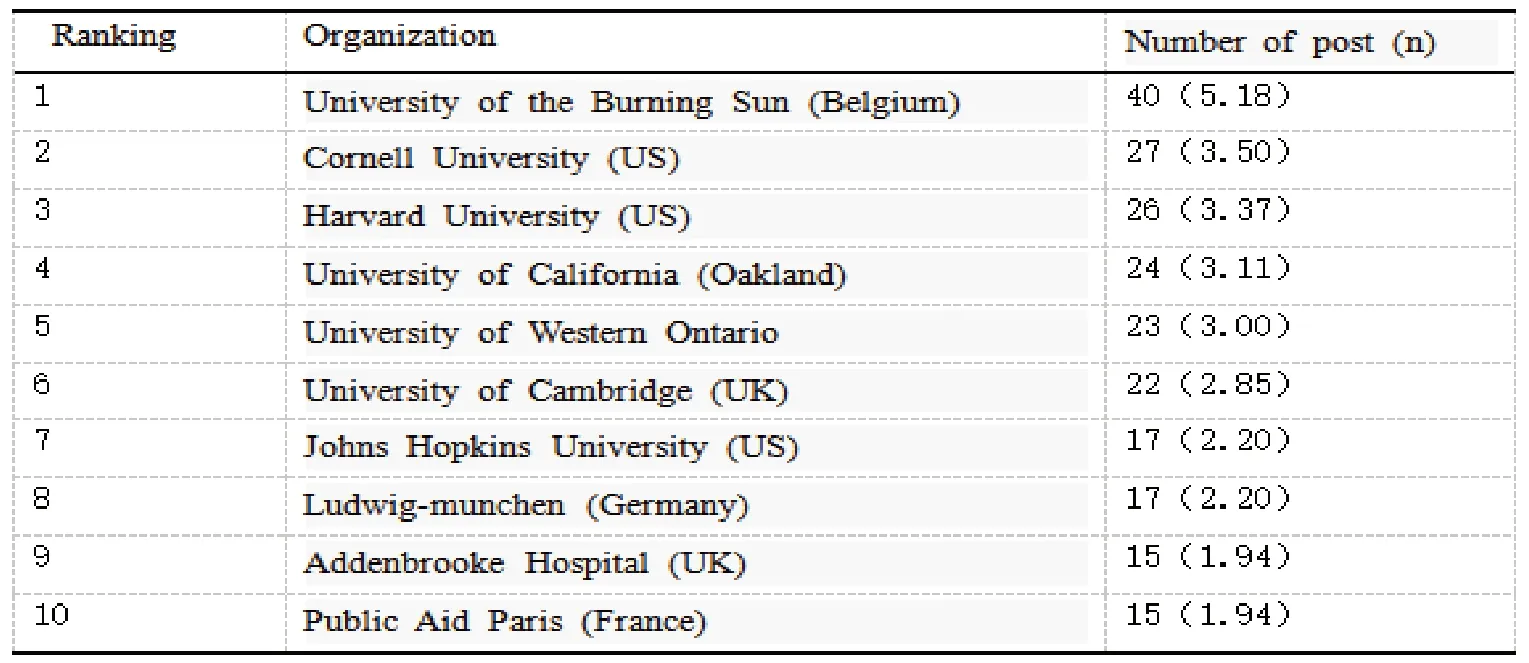
Table 1.Top 10 institutions with publications related to persistent plant status from 2001 to 2021
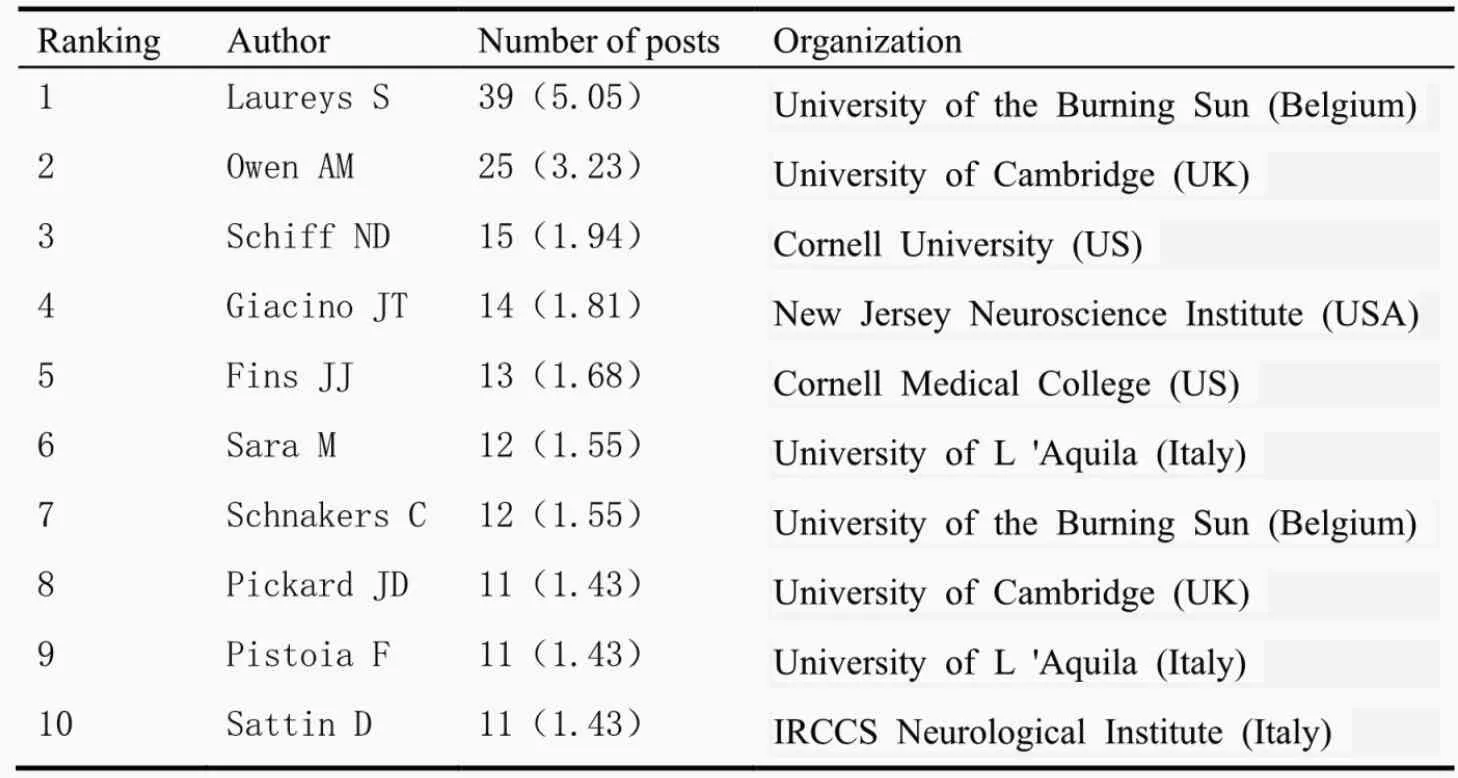
Table 2.Top 10 authors with publications on persistent plant status from 2001 to 2021
Discussion
In this study, a bibliometric method was used to conduct a multiangle analysis of the literature related to persistent plant state from 2001 to 2021.The results show that the top three countries in the world in terms of the number of published documents are the United States, Italy and the United Kingdom.In addition, the H-index and citation frequency of the United States rank first in the world.The H-index and citation frequency respectively reflect the quality and influence of literature, indicating that American scholars are far ahead in research in this field.China ranks fifth in the world in the number of published papers, but its H-index and citation frequency only ranks eighth in the world, indicating that Chinese scholars'research on PVS still needs to be improved, and efforts are still needed in terms of literature quality and influence.
The results of this study show that the research direction of PVS mainly covers neuroscience, rehabilitation and internal medicine,indicating that this field has received the attention of neurological and rehabilitation physicians.The source journals of PVS-related literature have relatively low impact factors.In 2020, the average impact factor of the top 10 journals with PVS-related literature publication volume was 4.55.Brain Injury is the most published journal with a 2020 impact factor of only 2.311.Judging from the total number of published papers, the research scale and investment scale of the disease are relatively small, and there are relatively few researchers involved in PVS research.Therefore, the impact factor of journals publishing PVS-related literature is generally not high.Brain Injury, Archives of Physical Medicine Rehabilitation and Neurology accounted for 8.2% (64/772) of the top 10 journals in terms of publication volume.These three journals reflect the international research on PVS.It is helpful for researchers to graspthe latest research trends and trends of PVS.
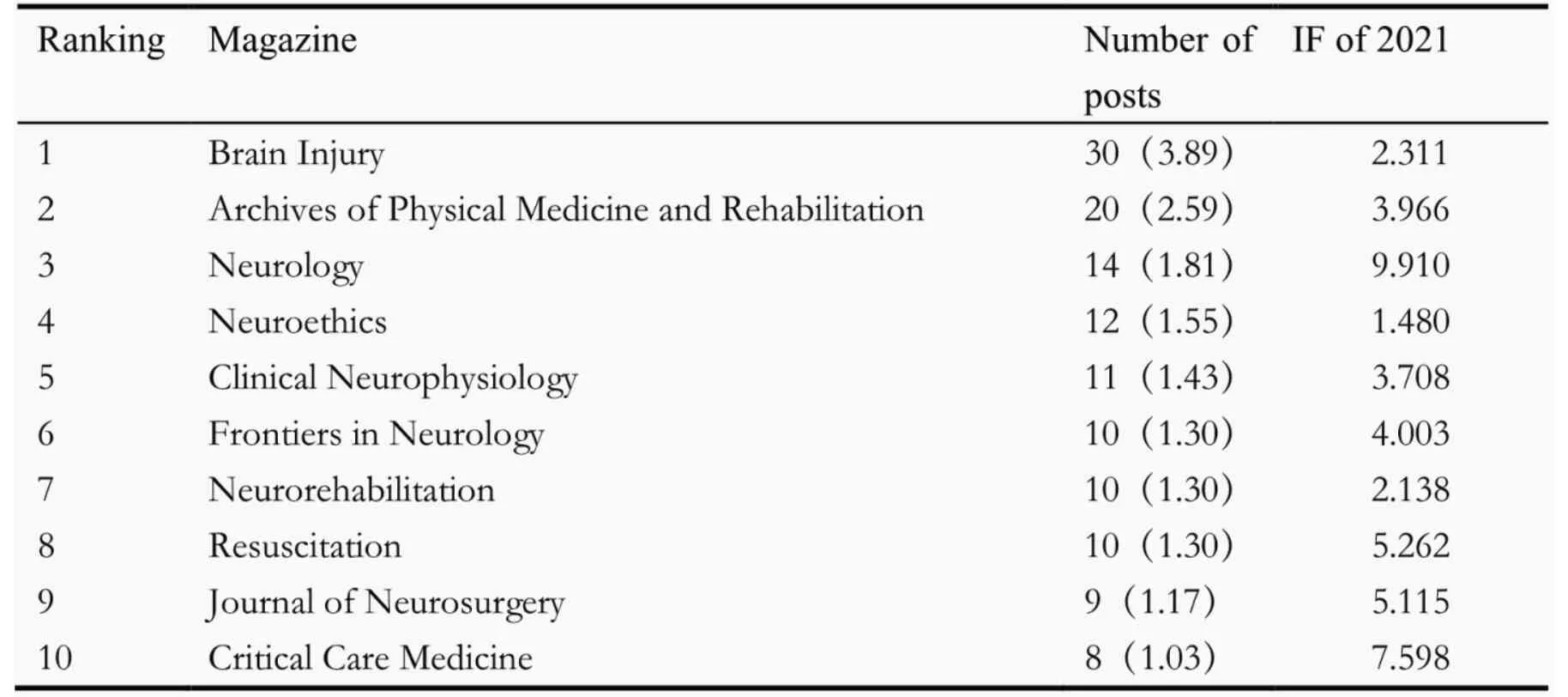
Table 3.Top 10 journals and their impact factors in terms of publications related to persistent plant status from 2001 to 2021
The most cited papers not only lay the groundwork for further research but also provide reasonable predictions for research fronts.In this study, the top 10 literatures with total citation frequency were analyzed, and it was found that the literatures related to PVS focused on the diagnosis and treatment of the disease.The diagnosis of the disease requires a thorough and repeated multimodal assessment to prove the existence of consciousness.The best diagnostic evidence includes three aspects of bedside examination techniques,electroencephalography and functional neuroimaging, bedside examination techniques in addition to comprehensive in addition to the neurological examination, the use of mirrors to probe for voluntary eye movements to differentiate from locked-in syndrome,repeat clinical assessment using the Coma Recovery
Scale Score (CRS-R) in subacute and chronic settings, CRS-R The reliability of the total score is high, repeated measures can make a stable estimate of the patient's status, and can distinguish between MCS and PVS patients [15].In the acute phase, the Full Outline of Unresponsiveness was used instead of the Glasgow Coma Scale, clinically standard EEGs were obtained, and sleep patterns, especially REM and slow-wave sleep, were searched on the EEG, and when feasible quantitative analysis of positron emission tomography, resting-state functional magnetic resonance imaging(fMRI), active fMRI, and high-density electroencephalography should be considered under circumstances to supplement the state of consciousness in patients who are not cooperating at the bedside[16].There are no general guidelines for treatment, but there is no doubt that restoring the sleep-wake cycle, nutritional balance, bowel and bladder regulation, and passive movement of large joints are the basic goals of clinical treatment [17-18].
The more times the keywords appear in the literature, the more attention the field has received by researchers.Through the analysisof VOS viewer software, it was found that the keywords of PVS were mainly concentrated in four groups: "diagnosis-related","treatment-related", "prognosis-related" and "disease-related".The diagnosis of PVS remains a challenge in clinical diagnosis and treatment [19], and the main reason for this is the lack of a gold standard with sufficient sensitivity and specificity to classify patients with persistent disturbance of consciousness [20].This may be the latest research hot spot of PVS and a bellwether to lead this field in the future.

Table 4.Top 10 references on persistent plant states with total citation frequency from 2001 to 2021
To sum up, this study evaluated the global knowledge about PVS from the aspects of literature overview, country and region,literature source publications, authors, literature research direction,literature citation frequency, impact factor, H-index and keywords,to help people quickly understand the relevant background knowledge of PVS, and further help researchers to grasp the topic macroscopically and conduct microscopic research and provide a reference for subsequent research.At the same time, it provides help for researchers to understand the current research progress and formulate new research directions.
- Life Research的其它文章
- Exploring the practice of common oral diseases among the patients visiting in the selected dental college and hospital in Bangladesh
- Different levels of MUC5AC and MUC5B genes expression in severe allergic versus non-allergic asthma
- Research progress on iron homeostasis regulation and heart-related diseases
- The regulatory variant rs17612742 confers the risk of large artery atherosclerotic stroke by increasing the expression of endothelin receptor type A
- The establishment of pancreatic islet isolation in India – an update on human pancreatic islet transplantation
- Physiological signal processing in heart rate variability measurement: A focus on spectral analysis

